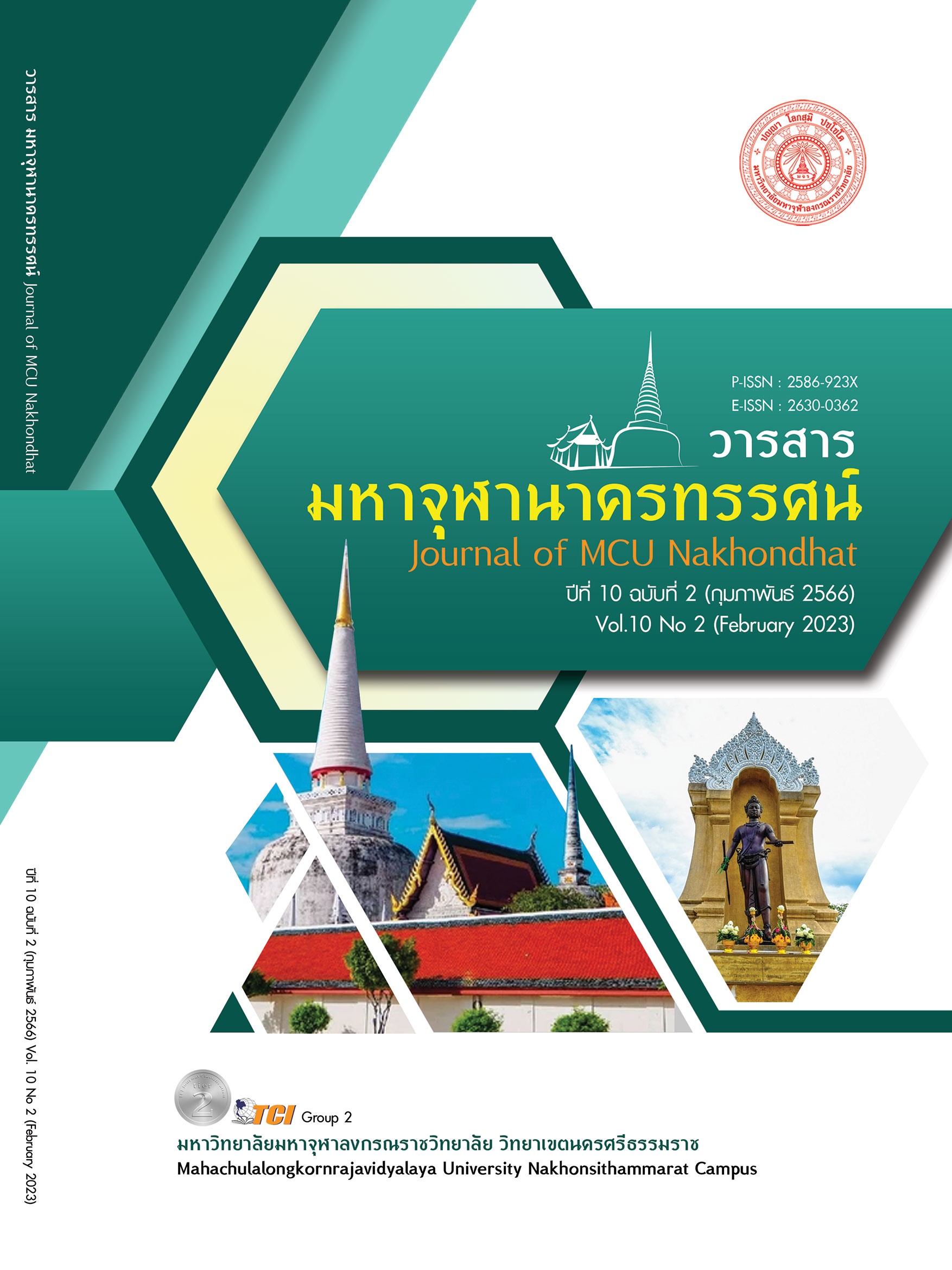CANONICAL RELATIONSHIP BETWEEN INSTRUCTIONAL LEADERSHIP OF SCHOOL ADMINISTRATORS AND TEACHER LEADERSHIP OF THE PRIMARY SCHOOL IN THE SOUTHERN BORDER PROVINCES
Main Article Content
Abstract
The Objectives of this research article were to 1) to study the rate and the pattern of the highest relation between Instructional Leadership of School Administrators and Teacher Leadership of the Primary School in the Southern Border Provinces 2) to study the prominent weight of canonical from canonical correlation between Instructional Leadership of School Administrators and Teacher Leadership of the Primary School in the Southern Border Provinces. 3) to analysis composed variable or canonical variable from correlation coefficient between Instructional Leadership of School Administrators and Teacher Leadership of the Primary School in the Southern Border Provinces. This study was Quantitative Research. The sample ware 285 school administrators and 570 teachers. There were 855 respondents. The research were two instruments. The statistics in analyzing the data were Mean, Standard Deviation, Canonical Correlation Analysis. It was found that there was intercorrelation coefficient between instructional leadership of school administrators’ variables and teacher leadership’ variables. Canonical Correlation between Root 1 and Root 2 has Eigenvalues can explain variance of it 75% and 2.53% significance at the .05 level. Parameter of its called enhance competency in curriculum and enhance Learning environment with teachers creative education development and continuous learning. 3) to analysis composed variable or canonical variable from correlation coefficient between Instructional Leadership of School Administrators and Teacher Leadership of the Primary School in the Southern Border Provinces. It was found that to enhance competency in curriculum relation with creative education development and enhance Learning environment relation with continuous learning.
Article Details

This work is licensed under a Creative Commons Attribution-NonCommercial-NoDerivatives 4.0 International License.
References
กระทรวงศึกษาธิการ. (2542). พระราชบัญญัติการศึกษาแห่งชาติ พ.ศ. 2542 และที่แก้ไขเพิ่มเติม (ฉบับที่ 2) พ.ศ. 2545. กรุงเทพมหานคร: คุรุสภาลาดพร้าว.
ประเสริฐ พืชผล. (2560). รูปแบบการบริหารจัดการที่มีประสิทธิภาพของศูนย์พัฒนาเด็กเล็กในภาคใต้. วารสารมนุษยศาสตร์และสังคมศาสตร์ มหาวิทยาลัยราชภัฏสุราษฎร์ธานี, 9(2), 319 – 345.
ปวีณา บุทธิจักร. (2564). ภาวะผู้นำทางวิชาการของผู้บริหารสถานศึกษาที่ส่งผลต่อประสิทธิผลการบริหารงานวิชาการของโรงเรียนสังกัดสำนักงานเขตพื้นที่การศึกษามัธยมศึกษา เขต 21. วารสารการบริหารการศึกษาและภาวะผู้นำ มหาวิทยาลัยราชภัฏสกลนคร, 10 (37), 210- 220.
วันเผด็จ มีชัย. (2554). ภาวะผู้นำทางวิชาการที่ส่งผลต่อการบริหารงานวิชาการในโรงเรียนสังกัดองค์การบริหารส่วนจังหวัดขอนแก่น. วารสารศึกษาศาสตร์ มหาวิทยาลัยขอนแก่น, 5(2), 79 – 85.
สำนักงานคณะกรรมการการศึกษาขั้นพื้นฐาน. (2552). คู่มือการปฏิบัติงานข้าราชการครู. กรุงเทพมหานคร: ชุมนุมสหกรณ์การเกษตรแห่งประเทศไทย.
สำนักงานเลขาธิการสภาการศึกษา. (2560). แผนการศึกษาแหงชาติ พ.ศ.2560 - 2579. กรุงเทพมหานคร: พริกหวานกราฟ์ฟิค.
Chell, J. (2001). Introducing principal to the role of instructional leadership: A summary of master’s project. Retrieved February 4, 2022, from http://www.ssta.sk.ca/research/leadership/95-14.html
Glickman, C. D. et al. (2007). Supervision and instructional leadership. New York: Parson Educational.
Hopkins, D. (1993). A teacher’s guide to classroom research. Buckingham: Open UniversityPress.
Krejcie, R. V. & Morgan, D. W. (1970). Determining Sample Size for Research Activities. Educational and Psychological Measurement, 30(3), 607-610.
Larson, J. L. (2006). Subjective fatigue, influencing variable, and consequences in chronic obstructive pulmonary disease. Nursing Research, 55(1), 10 - 17.
Ohlson, M. (2009). A study of school culture, leadership, teacher quality and student outcomes via a performance framework in elementary schools participating in a schoolreform initiative.Retrieved 2022 4, January, from http://proquest.umi.com/pqdweb?did=1845692191&Fmt=2&clientId=71090&RQT=309&VName=PQD


